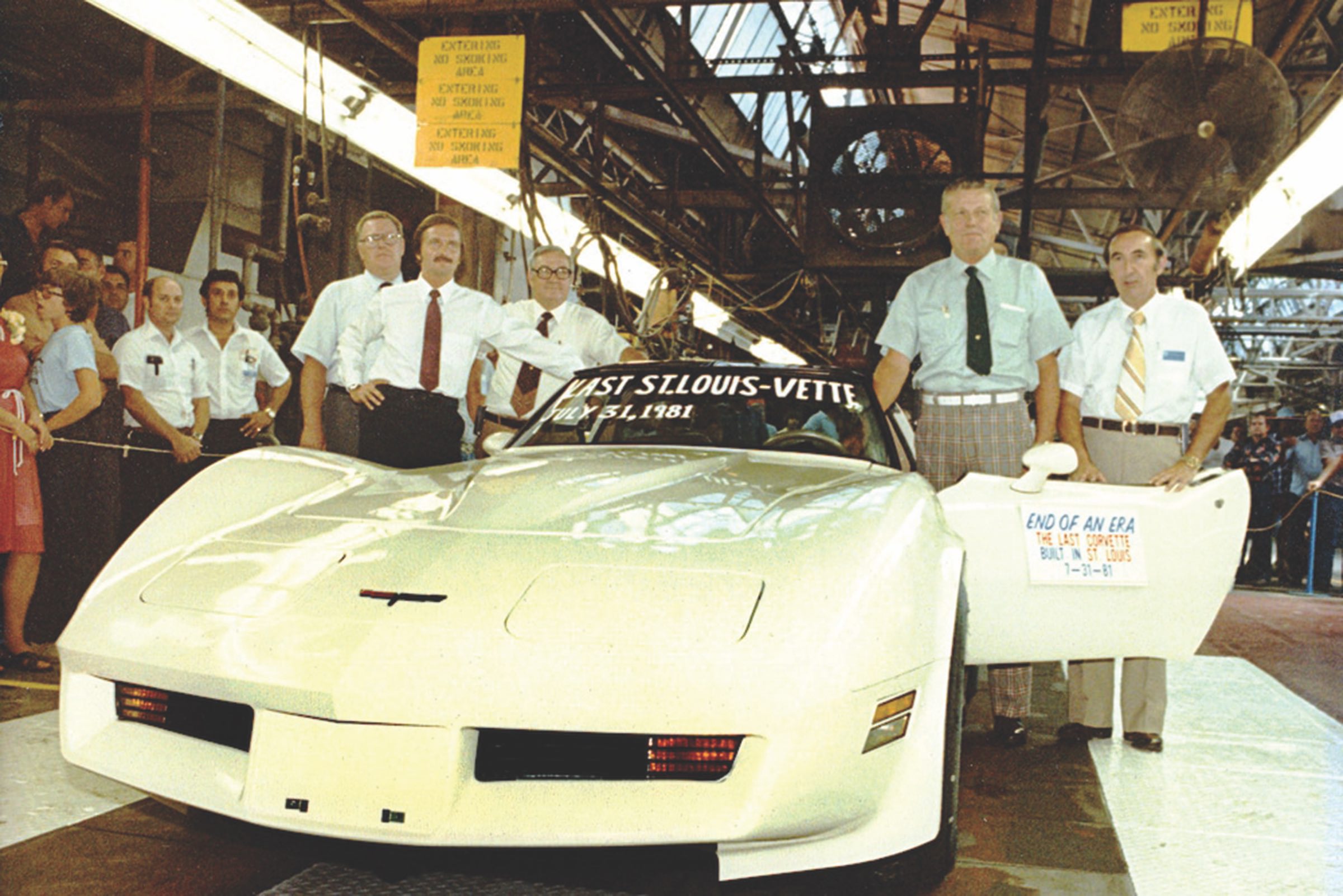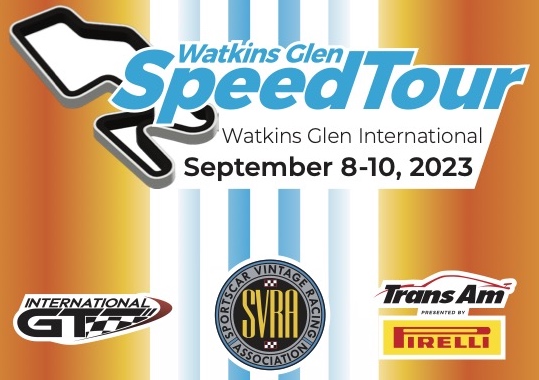Event Program: 2023 Watkins Glen SpeedTour
Corvette @ St. Louis
Corvette @ St. Louis

In 1908, Detroit wagonmakers Fred and Charles Fisher started Fisher Body Company to supply bodies for Cadillac, Buick, Oakland and Oldsmobile. By 1914, they’d brought all five of their brothers into the business and grown into the largest auto body manufacturer in the world. In 1919, General Motors bought control of Fisher Body, combined it with Fleetwood and in 1926, renamed it Fisher Body Division.
Fisher Body’s Mill Building at the intersection of Natural Bridge Road and Union Boulevard Northwest of St. Louis was expanded and divided into two separate plants. One produced Chevrolets, the other GM trucks. During World War II, GM St. Louis put together DUKW amphibious vehicles using standard GM 2.5 ton, 6×6 CCKW all-wheel drive chassis. At full strength, St. Louis had 35,000 employees working in a 3-million square foot building.
From June 30 through December 24, 1953, General Motors employees hand-assembled 300 Corvettes on a pair of small prototype assembly lines in the Flint, Michigan Chevrolet plant, a new factory built in 1947 at G 3100 Van Slyke Road specifically to meet the expected postwar boom in full-size Chevrolet Bel Airs. General Motors never planned to build Corvettes at Flint, it was just a convenient spot to build a prototype line, easily visited by designers and engineers from GM’s Tech Center in nearby Warren, Michigan. It was soon appropriately named General Motors Assembly Research Center, where they tested out new manufacturing techniques.
On December 28, 1953, the first 1954 Corvette rolled off a true production line, located in the original Fisher Body Mill Building at the intersection of Natural Bridge Road and Union Boulevard, at one end of what had become known as the General Motors Union Boulevard Complex. While the nearby Chevrolet and GM truck lines spit out 560 vehicles a day, the goal for Corvettes was only 300 per month. Actual production for all of 1954 was 3640. Even this was far more Corvettes than Chevy dealers could dispose of…in 1955, they managed to sell just 700 Corvettes.
Production ramped up very slowly. It took until 1969 before Corvette production reached 30,000 a year, and until 1979 before they reached the St. Louis record of 53,000. In the three decades that Corvettes were produced in St. Louis, there were all sorts of production problems, plus multiple strikes by the United Auto Workers. And rightly so.
For years, each of the 62 separate parts of each fiberglass body had to be hand-sanded and fitted, which meant there was itchy fiberglass dust everywhere. The old factory had a glass roof and no air-conditioning. Combined with typical Midwest summer 90 degrees/90 percent humidity, the working conditions were brutal. GM’s solution was to install extra drinking fountains, plus hand out salt pills and free sweat bands.
On August 1, 1980, the adjacent Caprice/Impala assembly line was closed. Chevrolet production was then moved to a new state-of-the-art, 3.7-million square-foot factory on 569 acres in Wentzville, Missouri, about 40 miles away.
A year later, it was another typical hot, humid summer day when Alphonse Juergensmeyer drove the last Corvette off the Mill Building assembly line on July 31, 1981. It was the last of 695,214 Corvettes made in St. Louis. Roughly 1000 Corvette assembly-line workers moved to the new plant in Bowling Green, Kentucky.
The St. Louis GM truck assembly line was shut down in 1986, when production was shifted to the General Motors Janesville, Wisconsin factory. In over 60 years, dating back to Fisher Body, about 7-million vehicles had been built in the St. Louis factory.
The gigantic factory was repurposed into an industrial warehouse that now covers 43 acres, called Union Seventy Center Business Park. It’s surrounded by 118 landscaped acres that include trees, lawns and three ponds. The elderly building where Corvettes were assembled was torn down in 1992, but a modernized version of the truck factory façade still stretches along Union Boulevard and serves as the entrance to Union Seventy Center. If you’re a die-hard Corvette nut, you can visit, but there’s really not much left to see. Q


